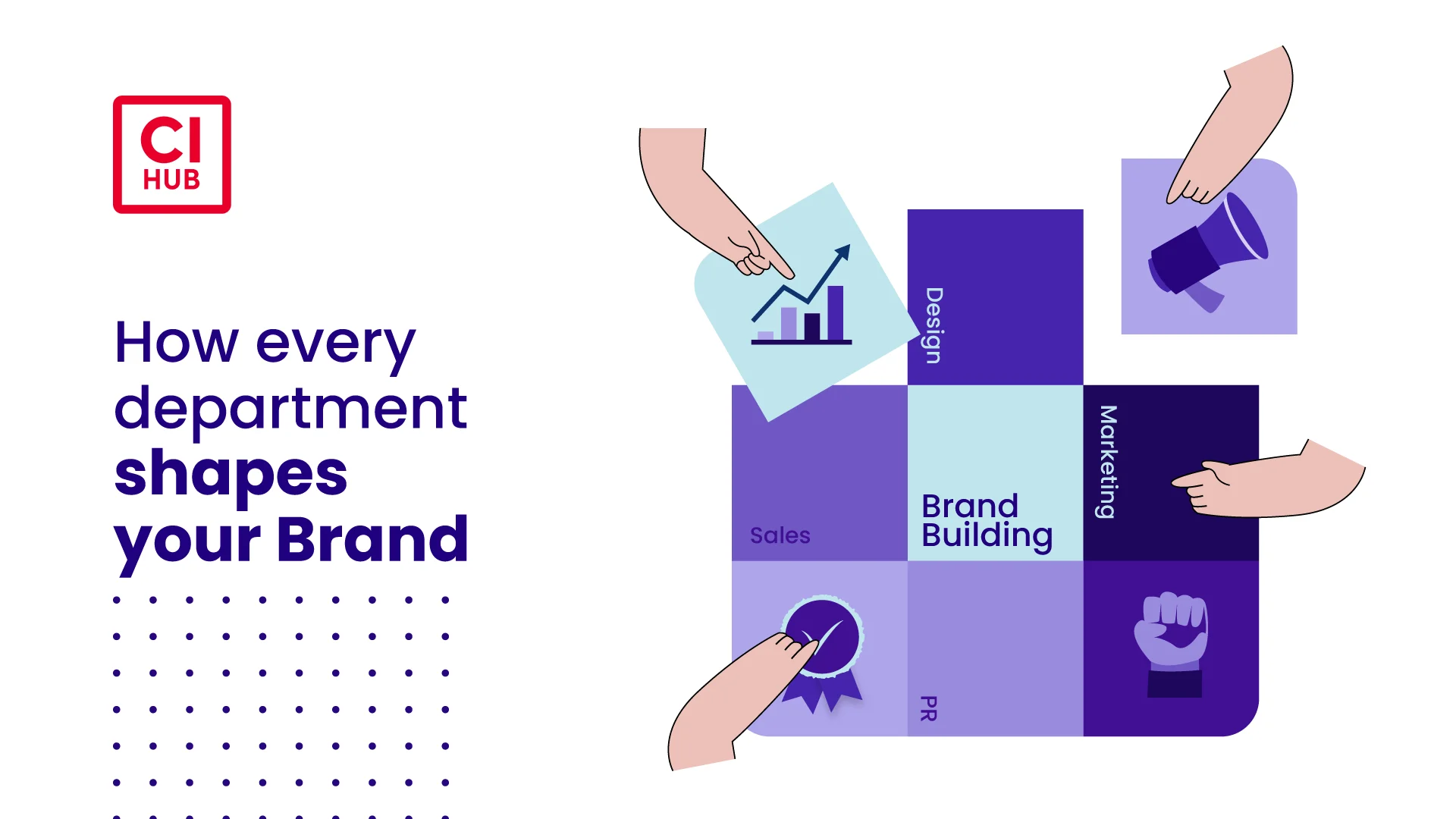One Brand. One Flow
Unify Teams with the CI HUB Connector for Your Assets to experience streamlined collaboration.

January 17, 2024
Branding is often seen as something handled only by marketing teams. But in reality, your brand is shaped by every single department inside your company. From how your sales team talks to clients to how HR speaks to new hires, every interaction leaves an impression.
A brand isn’t just a logo or a catchy tagline. It’s the everyday actions, words, and content your teams share with the world. When all departments work together, they create a consistent brand experience that builds trust and makes your company stand out.
In this blog, we will explore how different departments shape your brand and why aligning them can make your brand stronger and more consistent.
Branding is not just about how the world sees you. It’s also about how your own people experience and represent your company.
This shows how departments like sales, HR, legal, finance, and project management are now key players in branding, even though they weren’t seen this way before.
Let’s break down how different departments influence branding and what content they handle.
Sales teams are on the front lines, interacting directly with potential customers. The documents they create must not only provide valuable information but also reflect the brand's image and values. Consistency in branding helps build trust and credibility.
HR documents shape the employee experience and reflect the company's commitment to its workforce. A cohesive brand identity in HR materials can help attract top talent and maintain a unified corporate culture.
Legal documents may seem far removed from branding, but consistent use of branding elements in legal materials can enhance the perception of professionalism and reliability. The legal team should also have access to purchased content so they can clarify licensing issues to avoid costly legal problems.
Financial documents are critical for investor relations and stakeholder trust. A well-branded financial report conveys stability and competence.
Project management documents showcase the company's ability to deliver on its promises. Brand consistency in these materials reinforces the company's reliability.
Every department depends on tools like Microsoft 365, Asana, Adobe Express, PIM systems, and FADEL Rights Cloud. Connecting your brand assets directly to these applications keeps content consistent, accessible, and always up to date. This seamless integration ensures your teams work faster and with fewer errors.
Explore all supported platforms on our Application Integration Page.
The employees in these departments, therefore, need controlled access to the materials they need to create their content. The corresponding solution should
All these aspects were guidelines for us in developing the CI HUB Connector. We have seen how difficult it is for companies to provide their teams with transparent and secure access to the content they need. We didn't want to reinvent the wheel; we tried to connect the existing wheels so that our customers could move forward even faster and more efficiently.
CI HUB provides teams with access to their company’s entire digital asset ecosystem, eliminating the need to switch between apps.
This makes content creation faster, safer, and more consistent across all departments.
Unify Teams with the CI HUB Connector for Your Assets to experience streamlined collaboration.
Every department plays a role in shaping your brand. When all teams work with the same voice, visuals, and values, your company appears united and trustworthy.
Make it simple for them to find and use the right content, and your brand will grow stronger from the inside out. Strong internal branding will improve how people see your company and make your teams feel proud to be part of it.
The five pillars of brand strategy are purpose, positioning, personality, perception, and promotion. They define what a brand stands for, what makes it unique, and how it communicates with the world.
Brand identity is how customers, competitors, and the public see your brand. It includes your values, personality, voice, tone, and visual style, and is reflected in everything from your logo and marketing to your customer experience.
Brand identity is important because a consistent look and tone build trust quickly. It turns casual interactions into lasting impressions, helping your business stand out from the competition.
No, brand identity is much more than a logo. It’s the full set of visual and verbal elements that represent your brand. This includes your logo, colour palette, typography, and tone of voice.
The 5 C’s of personal branding are Consistency, Creativity, Clarity, Commitment, and Consultation. These qualities help you build a clear, unique, and trustworthy brand that people easily recognise and remember.

Article by
Stefan Horst
As an external communications consultant and content expert for tech companies, Stefan Horst has been active in the world of marketing, publishing and print for several decades. He has worked for Adobe, Agfa, Philips, Extensis and WoodWing, among others. Currently, in addition to CI HUB, he works for Zaikio, Impressed and others.